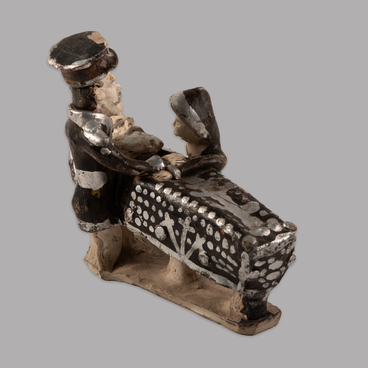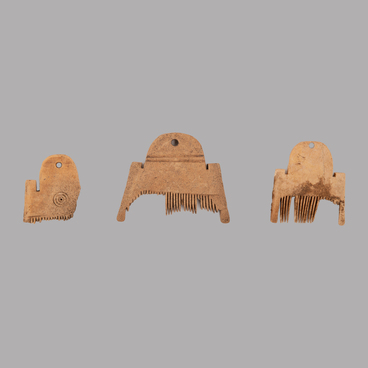In November 2005, a stone statue was discovered on the left bank of the Don River in the Lebedyansky district of the Lipetsk region during plowing. It was made of gray local sandstone in low bas-relief technique. The artisan strove to render clear facial features. The face turned out to be wide and puffy.
The statue’s shoulders and chin are highlighted, the eyebrows and nose are volumetric and form the letter T. The nose is straight, the eyes are bulging, and the mouth is a deep straight line. The bust of the statue is in good condition, but the lower part has not been found. The sculpture dates from the 11th to the 12th century.
At that time the territory of the modern Lipetsk region was the border between southern Russia and the Polovtsian steppe. Similar stone statues belonged to the Polovtsy and marked their ancestral territory. As a rule, the statues stood on watersheds, hills or mounds, which were built long before the appearance of this nomadic people in the steppe regions — in the Bronze Age and the early Iron Age.
The Polovtsy turned these places into sanctuaries, where they sacrificed animals, and sometimes people. Stone statues testify to the existence of the cult of ancestors among the Polovtsy. The Russian name for the Polovtsian sculptures — “baba” — probably comes from the Turkic word “vava”, which means “ancestor”, or from “balbal” — “grandfather-father”.
The statues depicted specific individuals to whom monuments were erected after their death, and became the subject of reverence and admiration. Male statues belonged to representatives of the Polovtsian military aristocracy, heads of wealthy families and clans; female statues belonged to the wives of the military nobility, who performed the managerial functions during the absence of their husbands.
Ancient written sources repeatedly mentioned stone sculptures on the territory of the Lipetsk region, but until recently not a single one has been found. The discovery of this item was a real sensation. In 2018, the statue was donated to the Lipetsk Regional Museum of Local Lore by the local historian Kirill Olegovich Nadov.
The statue’s shoulders and chin are highlighted, the eyebrows and nose are volumetric and form the letter T. The nose is straight, the eyes are bulging, and the mouth is a deep straight line. The bust of the statue is in good condition, but the lower part has not been found. The sculpture dates from the 11th to the 12th century.
At that time the territory of the modern Lipetsk region was the border between southern Russia and the Polovtsian steppe. Similar stone statues belonged to the Polovtsy and marked their ancestral territory. As a rule, the statues stood on watersheds, hills or mounds, which were built long before the appearance of this nomadic people in the steppe regions — in the Bronze Age and the early Iron Age.
The Polovtsy turned these places into sanctuaries, where they sacrificed animals, and sometimes people. Stone statues testify to the existence of the cult of ancestors among the Polovtsy. The Russian name for the Polovtsian sculptures — “baba” — probably comes from the Turkic word “vava”, which means “ancestor”, or from “balbal” — “grandfather-father”.
The statues depicted specific individuals to whom monuments were erected after their death, and became the subject of reverence and admiration. Male statues belonged to representatives of the Polovtsian military aristocracy, heads of wealthy families and clans; female statues belonged to the wives of the military nobility, who performed the managerial functions during the absence of their husbands.
Ancient written sources repeatedly mentioned stone sculptures on the territory of the Lipetsk region, but until recently not a single one has been found. The discovery of this item was a real sensation. In 2018, the statue was donated to the Lipetsk Regional Museum of Local Lore by the local historian Kirill Olegovich Nadov.





